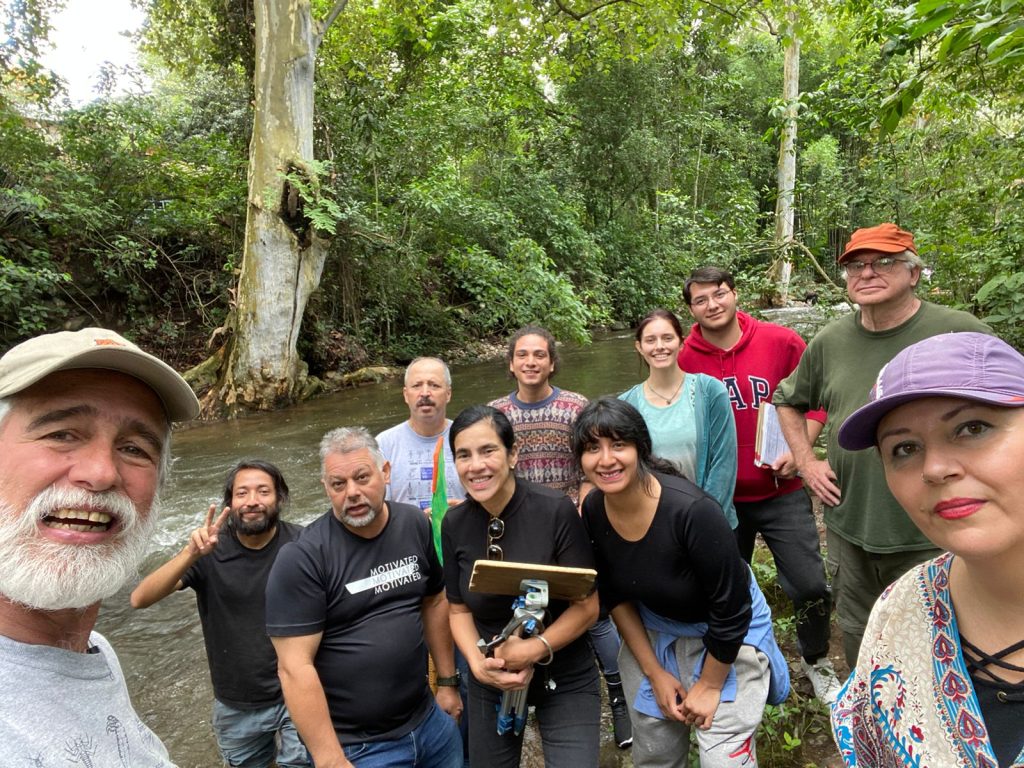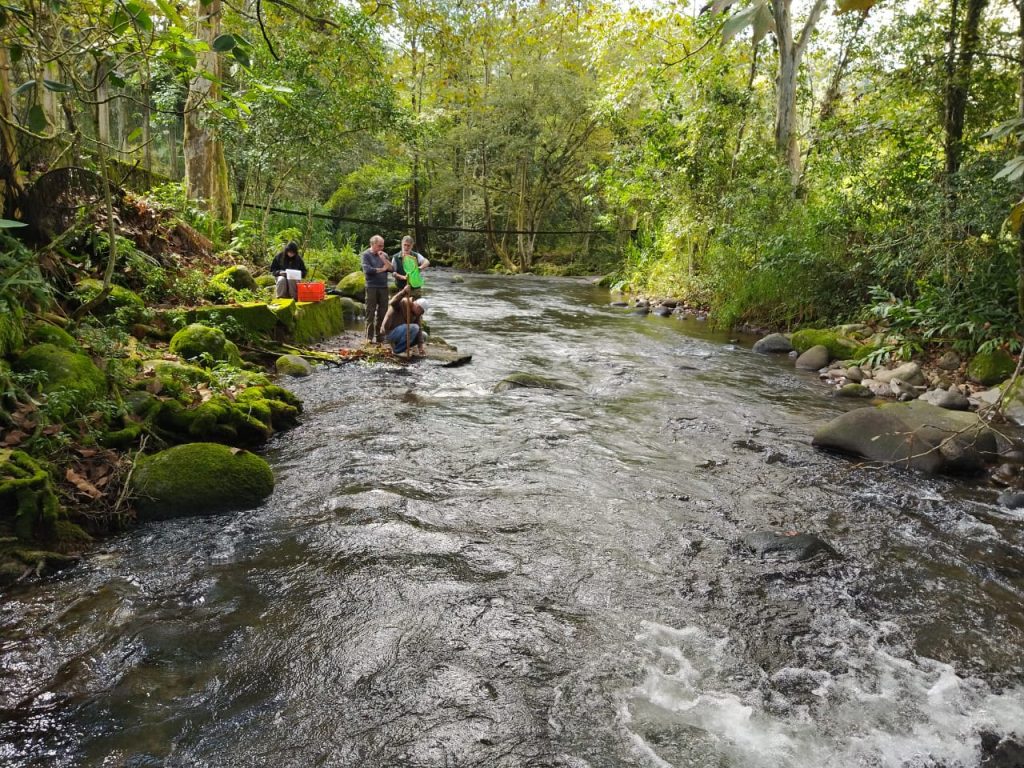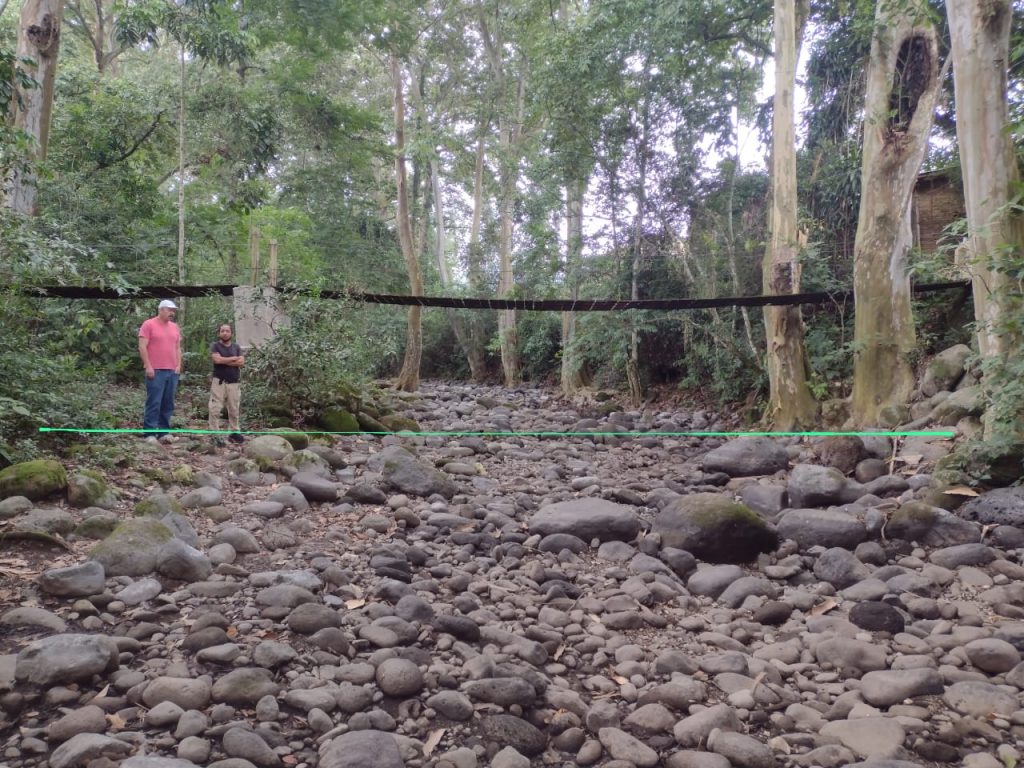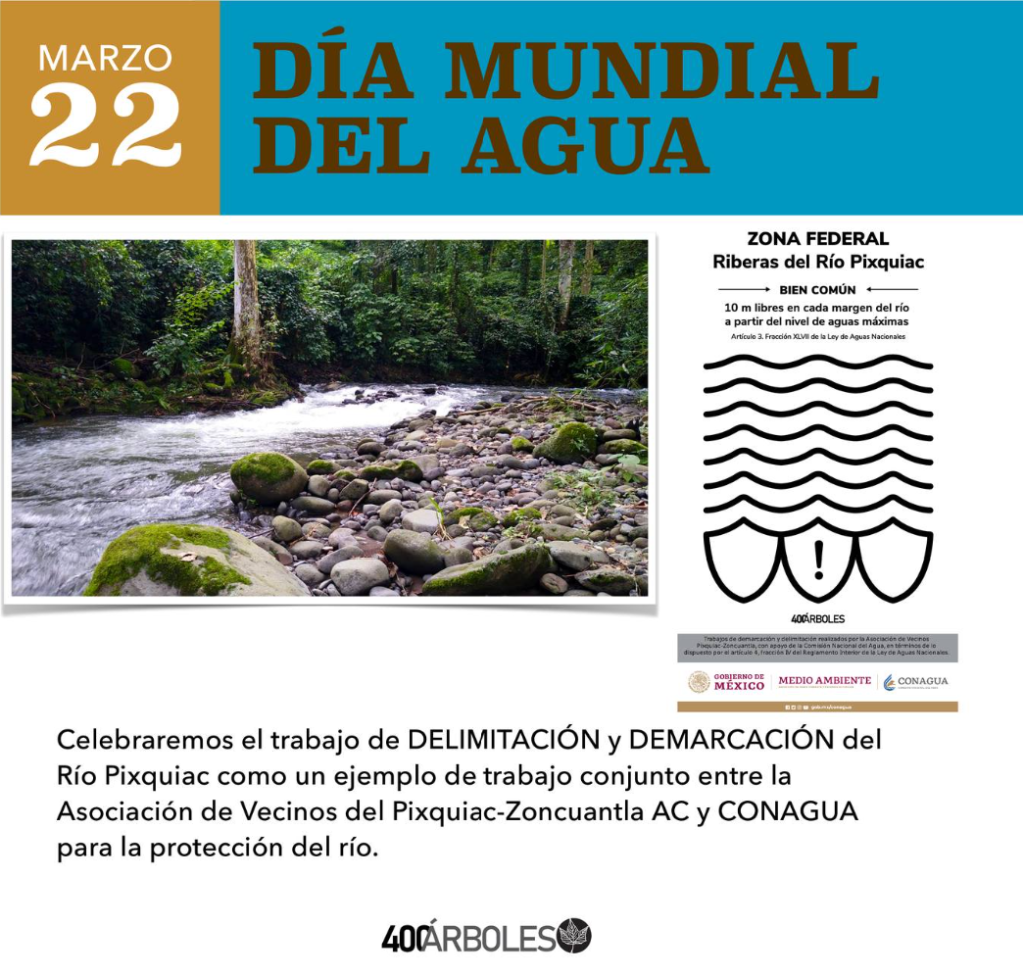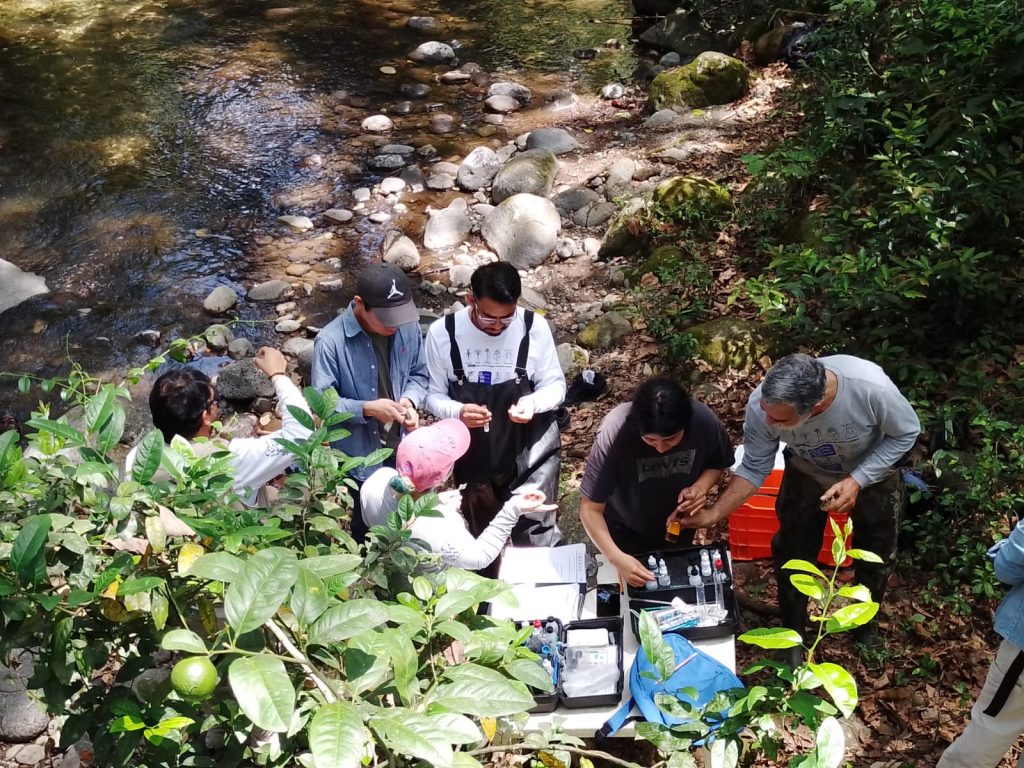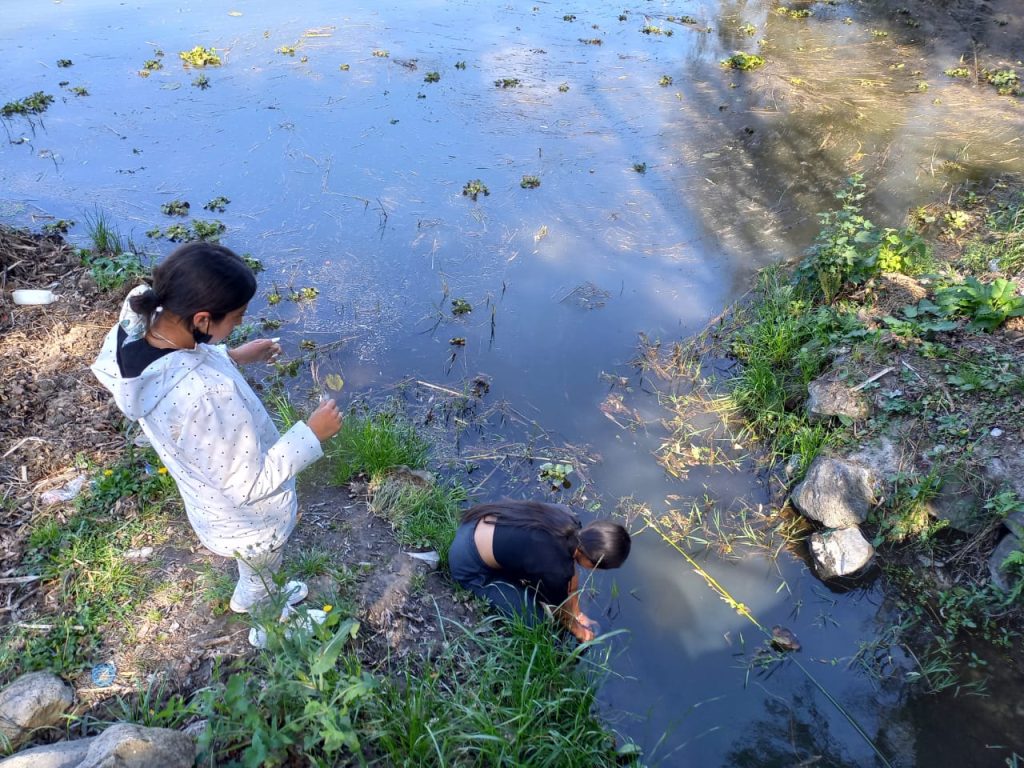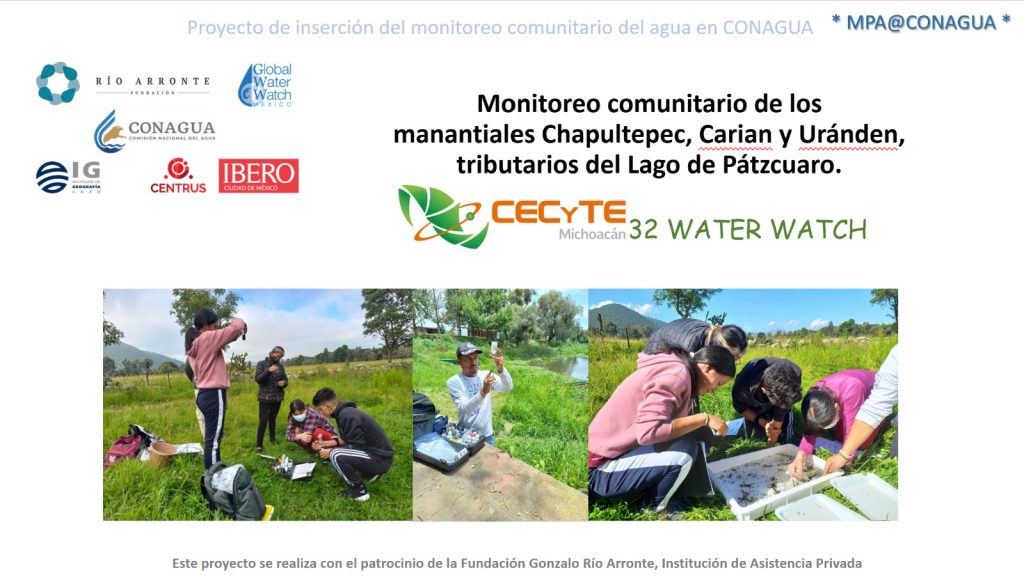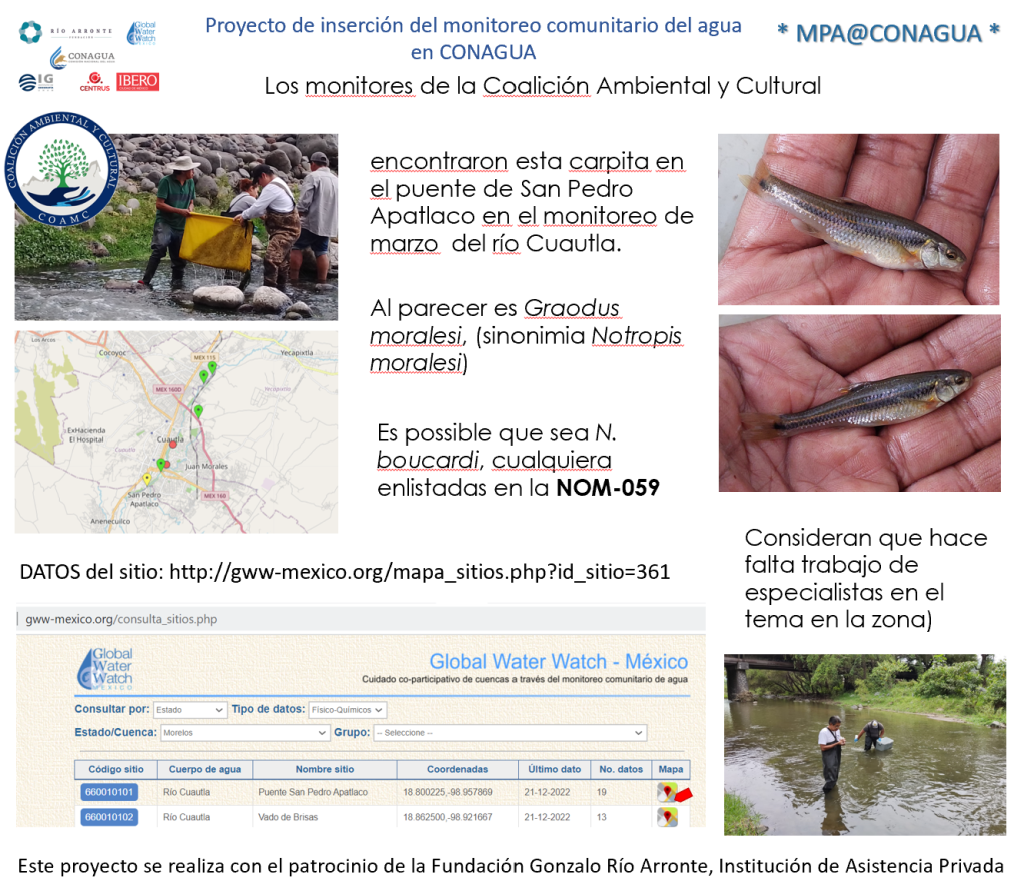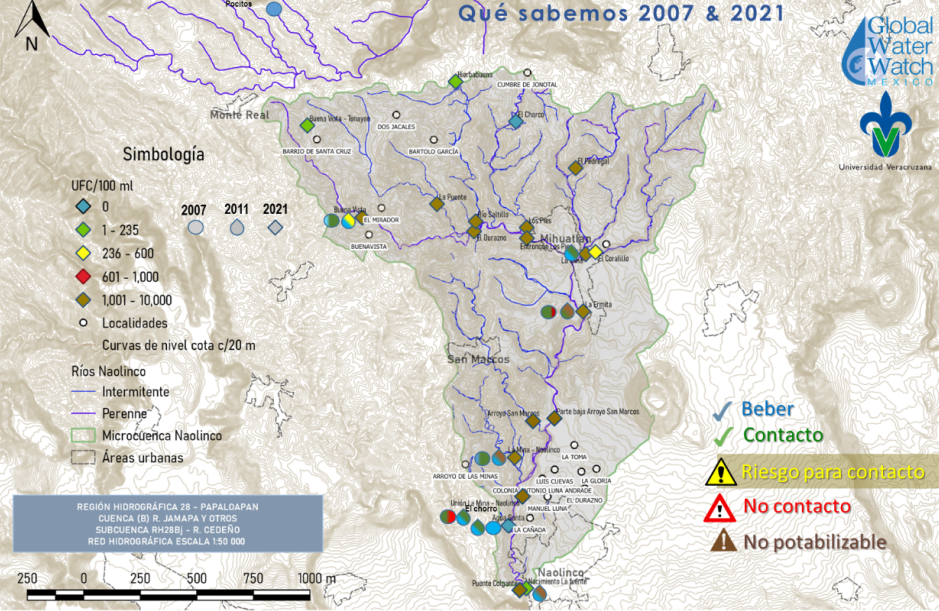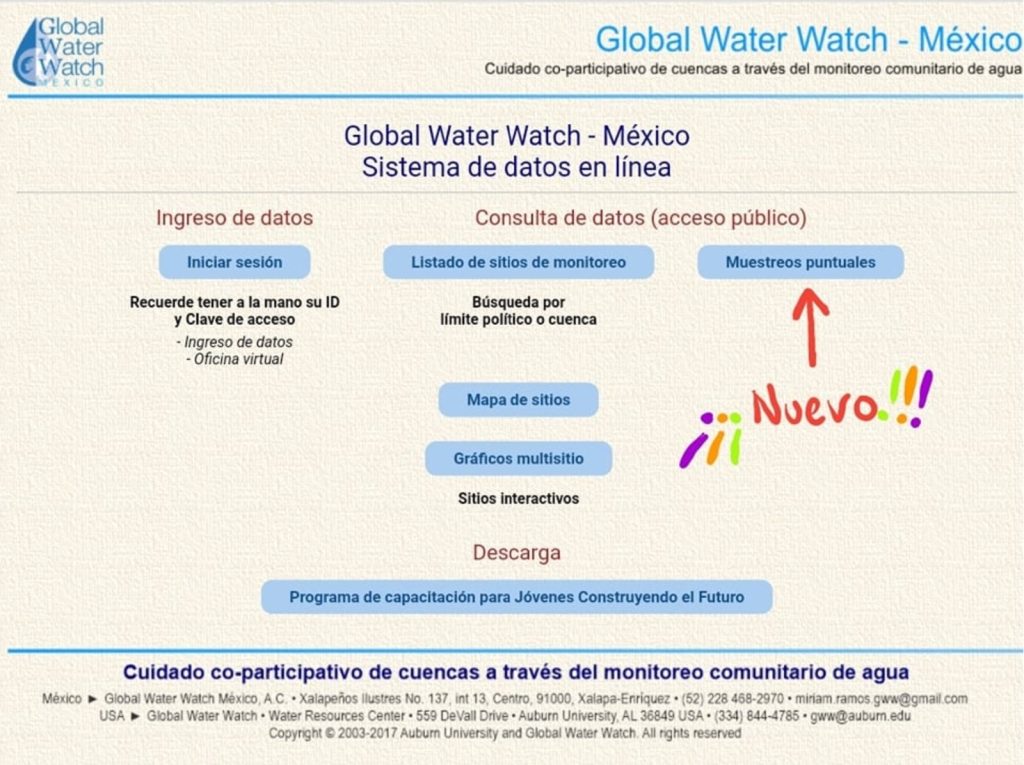Without a doubt, 2024 was an exciting year
⟿⟿⟿ Sometimes I feel like a one-man band, with no musical instruments. ⇜⇜⇜
Almost halfway into 2024, in the second half of May, GWW friends gathered in Peru. The morning of May 21, GWW-Mexico representative Arlette Fuentes met Sergio in Lima and flew together to Cuzco to start a series of activities with Peruvian environmental vigilantes and monitors. While in Cuzco, Arlette and Sergio led a community-based water monitoring session as part of the “School of Environmental Monitors, Pachamama Amachayta Awasun (Weaving Protection for Mother Earth)”. This school involves multiple events that have the purpose of strengthening capacities of female community members of Cusco and Apurímac. They gather to share and receive theoretical and practical modules related to community-based environmental monitoring and surveillance. It is remarkable to witness that locals from the native communities possess an unsurmountable ancestral knowledge about their territory and their communities, while describing what they know or have seen, unfolding every detail of almost everything within their territories. Furthermore, it is important to strengthen the capabilities of the population, especially women who stay in the territories and guarantee food for families despite any adversity they may encounter.

School of Environmental Monitors, Pachamama Amachayta Awasun (Weaving Protection for Mother Earth) in Cuzco, Peru.
==========
Two days after Cuzco our team traveled to Espinar, a town at about 3,900 meters (13,000 feet) above sea level, to conduct bacteriological monitoring, water chemistry monitoring, and biomonitoring certifications for locals. Local community members have committed to becoming environmental monitors and keep track of the well-being of the environment, as well as the dissemination of results from their water monitoring. For the last forty years they have lived with mining activities and their consequences; therefore, they promote dialogue among local actors to keep peace in their territories, and the need for the implementation of more environmentally friendly mining activities.
==========

Community members becoming environmental monitors in Espinar, Apurimac, Peru.
==========
Next stop was in the Puno region where the GWW team conducted certifications and recertifications, in all three types of GWW water monitoring for students and other volunteers, in the town of Coata. The next day, GWW-Chile representatives joined the gathering, as well as representatives from a Bolivian organization interested in implementing GWW water monitoring in their country. The larger GWW team traveled to the city of Chucuito where from May 29 to 31, in a scenario marked by the climate crisis and socio-environmental tensions, the V National Meeting of Environmental Vigilantes and Monitors was held. At this event, representatives from Puno, Cusco, Apurímac, Cajamarca, La Libertad, Ayacucho and Lima provinces gathered to reflect and encourage action in the face of the current environmental and political challenges.

Community members becoming environmental monitors in Coata, Puno, Peru.
With the slogan “our water and our lives have more value than minerals”, the meeting started on May 29 with an analysis of the current situation of community environmental surveillance and monitoring, highlighting the imposition of the energy transition based on the looting of the Global South countries. This translates into a negative impact on health and territories, due to extractive activities that do not respect human rights or the rights of Mother Earth.

Learning and sharing about local watersheds in Chucuito, Puno, Peru.
==========
October of 2024 saw our return to Chile to continue supporting the GWW expansion to more regions in the country. From north to south, Chile extends 4,270 km (2,653 mi) but is only about 350 km (217 mi) at its widest point, and averages just 177 km (110 mi) east to west. We visited again Laja, where a dozen students, a teacher and several community members, certified last year as GWW monitors, have been monitoring at three locations in Laja. They all got reunited again at this local school to attend recertification. Chilean GWW trainers Débora, Esteban, and Oscar traveled with me to conduct a classroom session with questions and answers about the three types of water monitoring that GWW promotes.
After Laja, we traveled to Tomé, the city where GWW-Chile has been holding many training sessions and other environmental education activities. The Municipality of Tomé has been a model collaborator and sponsor of GWW trainings; from the first certification training in 2022 GWW-Chile 2022, to the GWW-Chile 2023 when municipality employees and local teachers completed certifications in water monitoring. On Sunday, October 13, 2024 about 30 more monitors from other locations in Chile joined the gathering in what was considered the first annual meeting of GWW-Chile, attended by almost 90 participants. There were social activities, speeches, delicious food and sharing of numerous water monitoring stories. While in Chile, GWW also participated in the IV Meeting of Protected Areas and Gateway Communities, which are all those localities, physically or culturally, close to a protected area. Today about one third of Chile’s surface is protected under some form of land and/or marine protection. About 200 attendees participated in the event held at La Moneda Palace, a historical building that houses the president of the Republic of Chile and other ministries.
—–
By the end of 2024 GWW also had gone through sad times with the loss of Ms. Blanca Nava on May 20. She was a strong GWW collaborator from Mexico who promoted and pioneered environmental education for children with special needs.

GWW collaborator Blanca Nava Bustos from Veracruz, Mexico.
Few days later, on June 10th, Col. (Ret.) Richard (Dick) Bronson, passed away in Montgomery. He founded Lake Watch of Lake Martin in 1989 with the goal of protecting the lake’s water quality for future generations. Dick was an active monitor with AWW from 1993 through 2016, submitting more than 300 water chemistry data records. He was also engaged with the Global Water Watch Program; as the Bronson’s hosted international visitors at his home on Lake Martin countless times and traveled to the Philippines in 2004, where the group conducted water quality monitoring workshops.

Mr. Bronson in the Philippines, 2004 conducting a bacteriological monitoring training. Photo credit: Global Water Watch
And on the last day of the year GWW received the sad news of the passing of a wonderful GWW ambassador, Chilean monitor and trainer Juan Vera. The condolence messages came from all Chile…
- Today we are in mourning… our teacher, friend, companion, buddy, co-researcher, traveling friend, our dear village scientist Juan Vera, monitor and trainer of the Global Water Watch program, pillar of Parque para Penco, Park of the Koñintu Lafken Mapu Association, and part of Manzana Verde family, has left this dimension.
- Amid the confusion of losing him on the physical and material plane… we celebrate his life and the pleasure of having had his company… of knowing him in his multiple facets, of knowing his stories as a jupachino, as a librarian, as a mischievous child, as a loving father, husband and brother, as a teacher, as a trainer, as an inveterate joker, as a craftsman, as a master of preserves and other forest contraptions, as a guide, as a hunter, as a facilitator, as a colleague… Juan Vera in his multiple capacities, skills and surprises.
- We had the pleasure of working together and documenting much of his knowledge and his way of understanding and practicing reciprocity with nature from the Mapuche and peasant worldview; and we are certain that he wanted this to continue to be shared and disseminated. That is why we left many of his teachings in the photographs… so that they are sustained here, in the timelessness of this network and that we can turn to him when we need it.
- Thank you, Juan Vera, to you, to the time you dedicated to the network even when the energies were already fading, for being a great father and husband to Emilio and Paola and for all the happiness and deep knowledge of the Penco River basin that you gave us.
- We accompany your journey with love and tenderness, and we thank the family of Parque para Penco, Global Water Watch Chile and International and Rios Protegidos for accompanying your process of transcendence.
- May you continue to be reborn in the queules and in the cycles of the beings of the river that you learned to love as soon as you met them. You will continue to be present in each monitoring and Global Water Watch Chile and the Park for Penco will be your legacy.
- Thank you for giving so much joy to the chachaiyem… for always holding him high as he deserved.
- I am very sorry for your loss. Juan undoubtedly leaves behind a great legacy of love that will live on in you all.
- I had the opportunity to meet him in his stories that he told with emotion and conviction about nature.
- Peñi Juan will always live in the hills of Penco and his spirit will remain in our waters, grateful to have met such a beautiful being, goodbye Lamien Juanito we will always remember you!
- Great Juanito, inspiration, and what a blessing to have this knowledge immortalized forever.

Juan Vera, monitor and trainer of the Global Water Watch program, Penco, Chile.
GWW monitors and volunteers in Chile, Mexico, Peru, the US states of Mississippi and Washington and other places will continue gathering bacteriological, chemical and macroinvertebrate monitoring data on specific waterbodies across their countries. Their goal is to collect and establish baseline data of water quality observations within all possible watersheds to determine if they can provide clean water for the forests, its ecosystems, as well as the public—thereby, get better informed about land management and land use decisions. Let us hope for a peaceful and productive 2025, thank you again GWW friends.
- Photographs by Felipe Zanotti and the Manzana Verde Team












